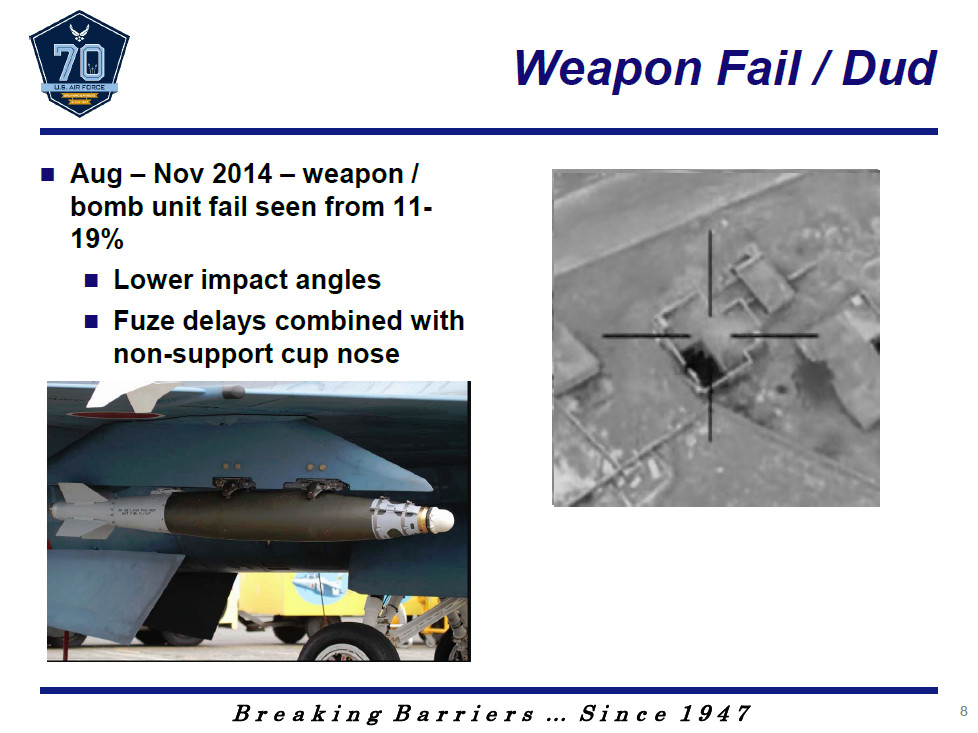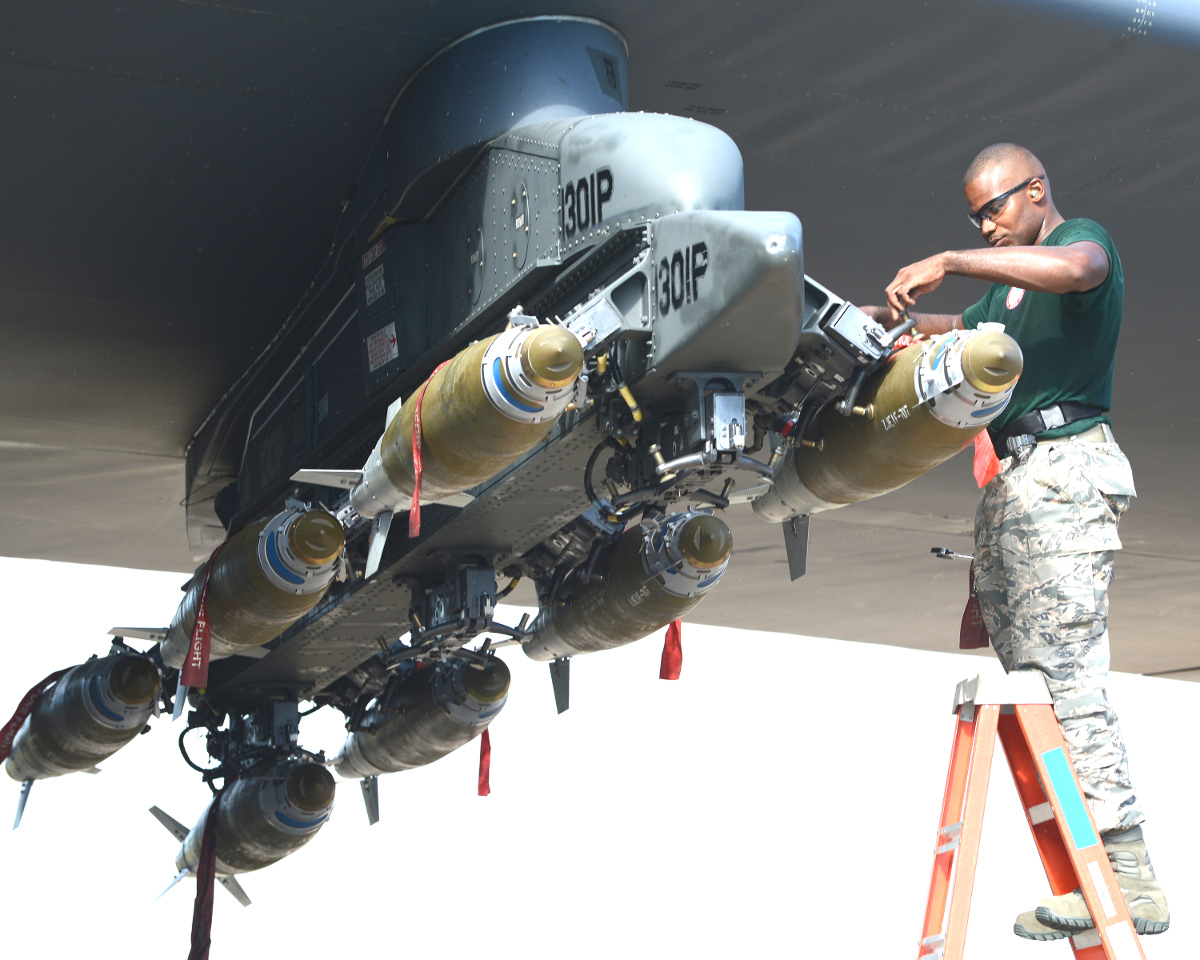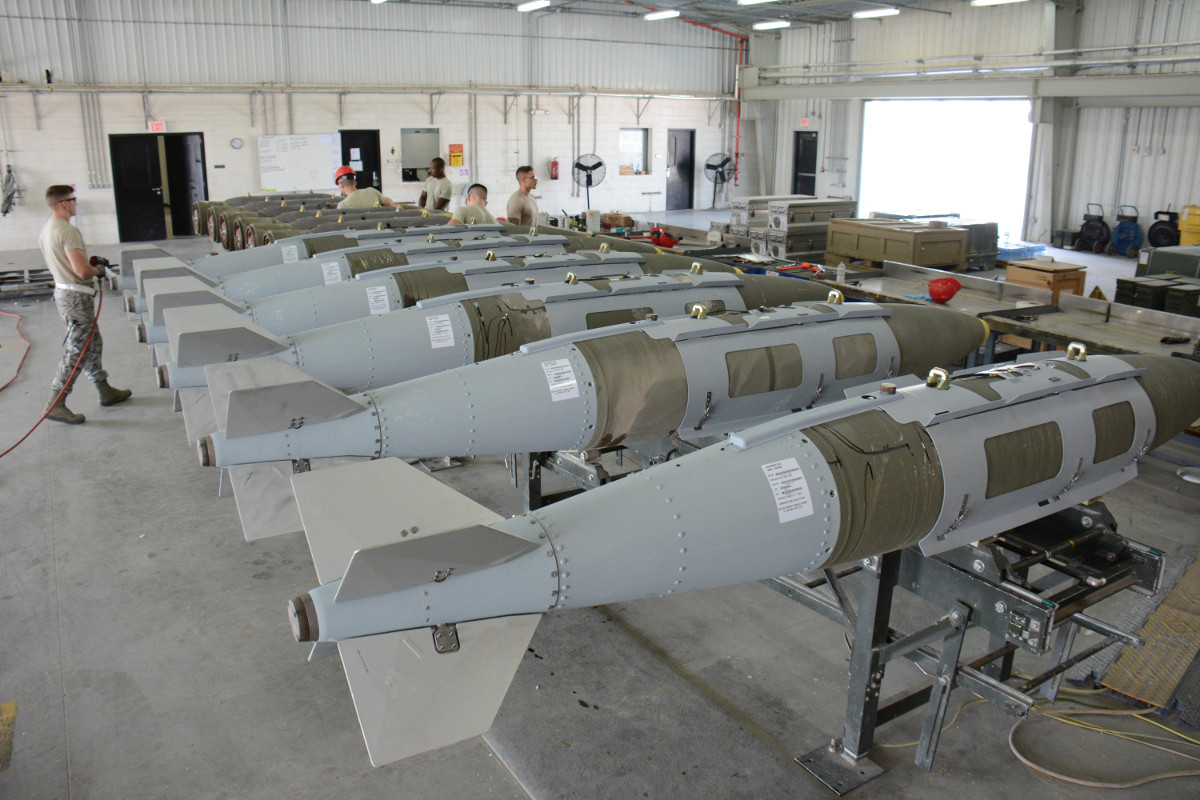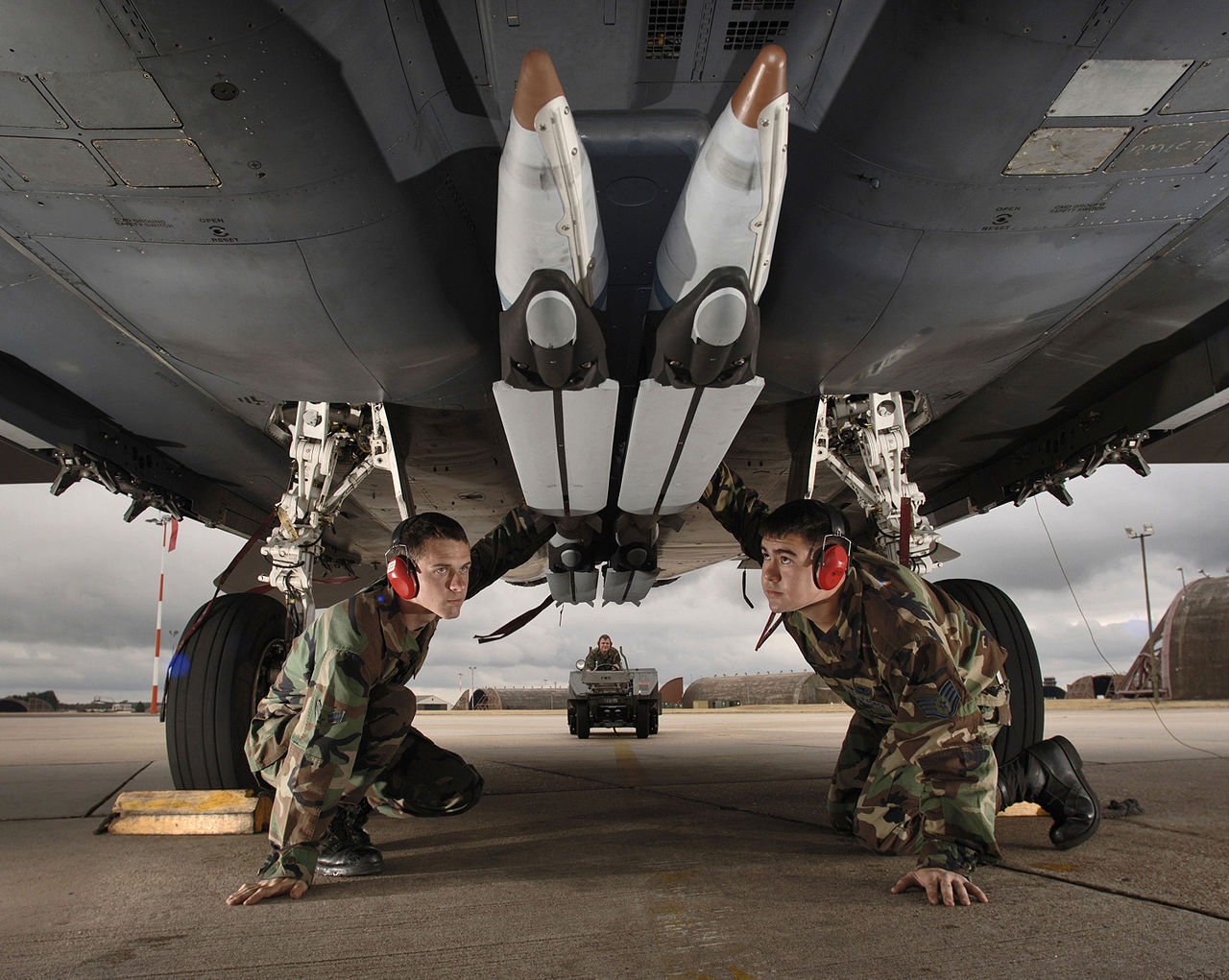No matter how well prepared a military is, it’s never easy to shift direction rapidly to respond to new threats. One U.S. Air Force briefing suggests Pentagon’s rush to counter ISIS in Iraq and Syria sent the service scrambling to find the right mix of tactics and weapons, with nearly 20 percent of its bombs failing to achieve the desired effect within the first four months of the bombing campaign and potentially contributing to an ongoing shortfall of certain bombs and missiles.
On Aug. 7, 2014, the United States kicks off air strikes against the brutal terrorists in Iraq, beginning attacks on its members in neighboring Syria the following month. But between August and November 2014, the Air Force saw between 11 and 19 percent of weapons either not have the intended effect or not detonate entirely, according to a briefing Air Force Major Brian Baker gave at the National Defense Industry Association’s Precision Strike Annual Review in March 2017. At the time, Baker was one of the American representatives at the multi-national Air and Space Interoperability Council, which included individuals from all of the so-called “Five Eyes” countries – the United States, Australia, Canada, New Zealand, and the United Kingdom.
The main reason for this was that the Air Force had initially shifted forces from Afghanistan, who had been primarily providing close air support and other counter-insurgency type missions, to the new fight in Iraq, he explained. By comparison, the situation in Iraq and Syria was “more similar to air interdiction – disguised as CAS [close air support].”
In general, CAS is supposed to describe strikes on targets that are actively engaged with friendly forces on the ground. Interdiction refers to attacks on the enemy before they get to an actual battle. Baker’s description matches up with what a public affairs officer for Combined Joint Task Force – Operation Inherent Resolve told me about aerial missions against ISIS all the way back in January 2015. At that time, there was some confusion in the official categorization of the missions.

Iraqi or Kurdish troops and vetted Syrian rebels only needed to be “in proximity” to ISIS fighters – sometimes miles away – for the Air Force to count the strike CAS, the official acknowledged. “It is sometimes the case that sorties tasked for CAS may wind up supporting strikes that look more like interdiction, or vice versa.”
Though perhaps a pedantic difference to many people, this confusion in roles had a direct impact on the kinds of weapons Air Force multi-role fighters, bombers, ground attack aircraft, and drones carried on each sortie. In his presentation, Baker identified three particular systems were major contributors to the early problems, the GBU-38(V)4/B and 5/B Joint Direct Attack Munition (JDAM) bombs and the DSU-33/B proximity sensor.

The two JDAM types are a GPS guidance kit attached to the BLU-126/B Low Collateral Damage Bomb (LCDB) and BLU-129/B Very Low Collateral Damage Bomb (VLCDB) respectively. These 500-pound class warheads both cause damage within a relatively small blast radius compared to full-power weapons. The DSU-33/B triggers the bomb’s fuze to air burst above the targets, showering them in shrapnel.
Combining the DSU-33 and either the LCDB or VLCDB creates a munition that is precise, deadly against enemy personnel who are either entirely exposed or with no cover above, and safe enough for pilots to drop in relative proximity to friendly forces. In short, it’s a great option for supporting troops on the ground in the midst of a protracted firefight who might desperately need air support.

But once engaged against ISIS, the Air Force found itself interdicting a “drastically different target set,” Baker noted. This included large structures, bridges, armored vehicles, and other hard targets, rather than just lightly armed insurgents in the open. Peppering these targets with a burst of fragments might rattle the occupants, but couldn’t incapacitate them or destroy their cover. If the proximity fuze had a delay in detecting an object or didn’t sense anything due to a low impact angle, the weapon might not go off at all. On top of that, the bombs wouldn’t have been useful at all for knocking out tanks, bridges, or tunnels.
The Air Force had begun to respond to these problems by the end of 2014, most notably starting to use 2,000-pound class GBU-31/B JDAMs. These weapons often had the BLU-109/B penetrating warhead, which could break through the roof of a concrete building before exploding within for maximum damage. The service quickly decided to save weapons like the GBU-38(V)4/B and 5/B “for expected urban fights” such as the liberation of Fallujah and Mosul, Baker added.

The Air Force appears to have resolved this initial mismatch, but the experience is likely to be a teachable moment. On top of that, the lessons learned may extend to procurement practices and broader planning for future conflicts. Though Baker does not implicitly make the connection in his brief, the problems he describes, including an existing inventory primarily structured around ongoing operations in Afghanistan and limited reserve stocks, could have been contributing factors to an ongoing bomb shortage.
Notably, his presentation also pointed out that the fight against ISIS had seen a dramatic increase in the service’s use of GBU-39/B Small Diameter Bombs (SDB), a light 250-pound class GPS-guided glide bomb, as well as Hellfire missiles. These small weapons would have been again most useful against small groups of insurgents in the open, crew served weapons and other fighting emplacements, and light vehicles. The Air Force felt stockpiles of both munitions were “healthy” as of March 2014, but the campaign in Iraq and Syria put its inventory of both “on glide path to zero.”

The F-15E Strike Eagle and F-16C Viper multi-role fighters can both carry the SDB. The service’s MQ-1 Predator and MQ-9 Reaper drones have historically been the main platforms for employing the Hellfire. In addition, Air Force Special Operations Command’s AC-130W Stinger II gunships, which have been spotted in action against ISIS, can launch both weapons.
As of 2017, other types of GBU-38s, with standard high-explosive warheads, along with the GBU-31s and 1,000-pound class GBU-32/B JDAMs, continue to be the most common weapons the Air force employs in Iraq and Syria. U.S. aircraft have been routinely carrying the 500-pound GBU-12/B Paveway laser-guided bombs and GBU-58/B dual-mode Laser JDAM, as well. As of November 2016, American aviators – whether from the Air Force, Navy, or Marine Corps – had not dropped any more specialized JDAMs with BLU-118/B or BLU-121/B thermobaric or BLU-109/B deep-penetrating bunker-busting warheads, though there is some indication these have since seen use during the Mosul offensive. However, with over 51,000 bombs and missiles expended in total by that point, the Pentagon was
reportedly digging into war reserves in Europe and Asia to make up for the shortfall regardless.

So, it’s not particularly surprising that the U.S. military’s proposed budget for the 2018 fiscal year includes a significant increase in spending on munitions. The Pentagon’s plan includes more than $874 million for more than 34,500 JDAM guidance kits, almost $714 million for over 7,600 Hellfires, and another approximately $504 million for more than 7,300 SDBs. In all, the full budget includes more than $16 billion in funds for missiles, bombs, and other ammunition.
“For munitions…, we remain challenged by the pace of current operations,” Air Force Major General James Martin Jr, the service’s Assistant Deputy Secretary for Budget, told reporters during the proposal’s rollout on May 23, 2017. “Based on current demand…, we will put an emphasis on replenishing our weapons inventory.”

With this in mind, the Air Force and the rest of the U.S. military will probably have to focus on just making sure there are enough munitions to continue its existing missions before moving on to see whether future purchases realistically take into account future crises.
Contact the author: joe@thedrive.com
